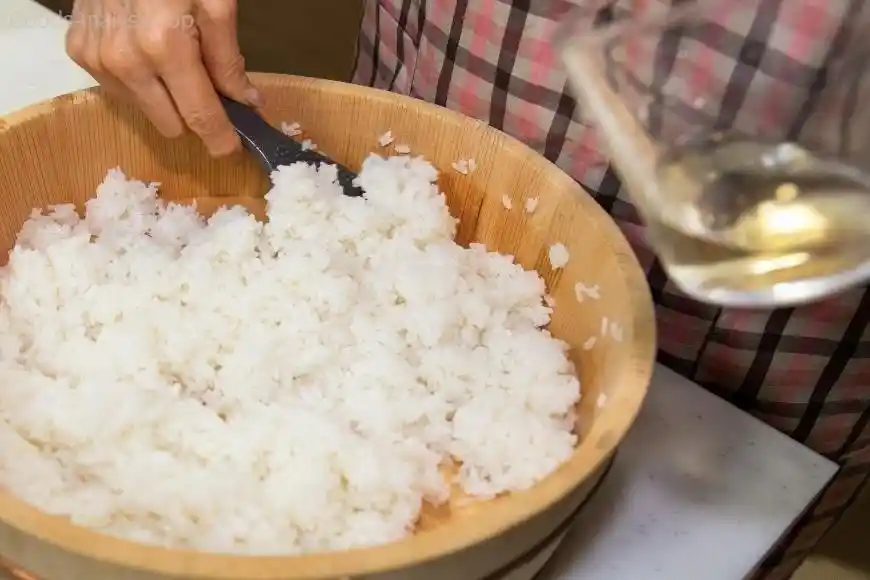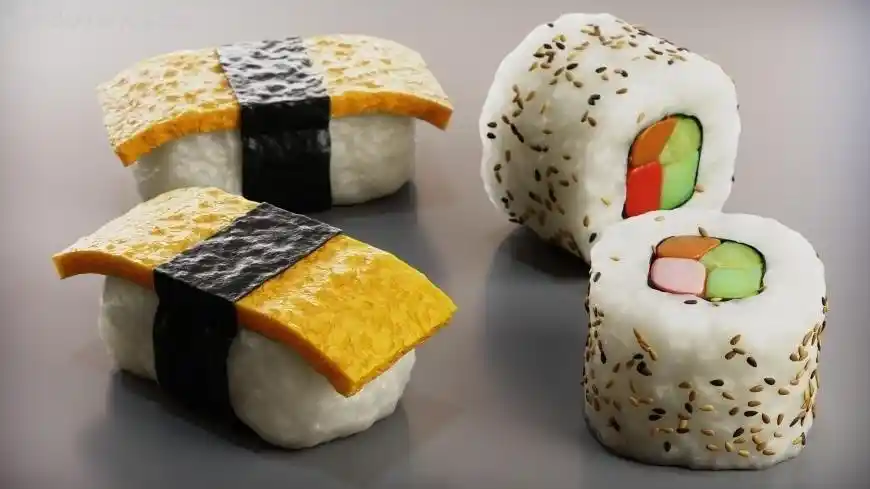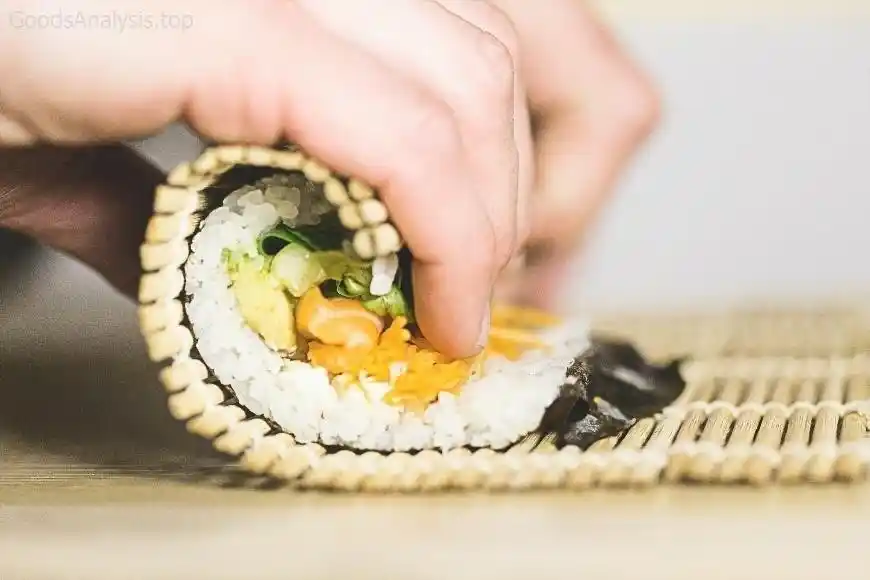Making sushi rice is an art and a science that requires patience, precision, and the right technique. But don’t worry! You don’t need to be a professional chef to create delicious, restaurant-quality sushi rice at home. In fact, with the right tools, ingredients, and a bit of know-how, you can master the basics in no time. Let’s dive into this comprehensive guide and unlock the secrets to sushi rice that’ll leave your family and friends impressed!
What is Sushi Rice?
Sushi rice (or shari or sumeshi) is not just plain white rice. It’s a special type of rice that is cooked, seasoned, and cooled to create the perfect texture and flavor for sushi. Unlike regular rice, sushi rice has a distinct combination of sweetness, tanginess, and umami due to the vinegar mixture that is added to it after cooking.
The Ingredients You’ll Need
Before you start, let’s gather the essentials. You’ll need:
- Sushi Rice – You can’t use regular long-grain rice for sushi. Sushi rice (also called Japonica rice) is a short-grain rice that’s sticky and soft, perfect for holding its shape. This is non-negotiable for authentic sushi.
- Rice Vinegar – This is the key to giving the rice that subtle tangy flavor. Don’t skimp on quality here; good rice vinegar will make a world of difference.
- Sugar – A little sugar is added to the vinegar mixture to balance out the acidity and create that sweet-savory sushi rice flavor.
- Salt – Just a pinch is needed to enhance the flavors and tie everything together.
- Optional – Kombu – A small piece of kombu (dried seaweed) can be added to the rice while it’s cooking to infuse a deep umami flavor. This is more common in Japanese households and restaurants, but it’s totally optional.
Tools You’ll Need
- A Rice Cooker (or a pot if you prefer)
- A Wooden or Non-Stick Bowl – This helps the rice cool evenly and prevents it from becoming too sticky.
- A Fan (optional) – In Japan, sushi chefs use a fan to cool the rice quickly, giving it a shiny appearance. You can use a handheld fan or just let it air cool naturally if you don’t mind skipping the extra step.
- A Wooden Spoon or Paddle – For mixing the vinegar and rice together gently.

Step-by-Step Guide to Making Sushi Rice
Step 1: Rinse the Rice
The first step is to wash the rice thoroughly. Sushi rice is sticky, so you need to rinse away the excess starch to ensure it’s not too gooey. Place the rice in a fine-mesh sieve or a bowl, and rinse it under cold water until the water runs clear. This might take several rinses, but it’s worth the time. The starch in the rice can make your sushi rice clumpy and too sticky if not properly rinsed.
Step 2: Soak the Rice
Once you’ve rinsed the rice, let it soak for 30 minutes to an hour in cold water. This allows the rice grains to absorb water and cook more evenly. If you’re short on time, you can skip this step, but soaking really helps get that soft, chewy texture you’re looking for.
Step 3: Cook the Rice
Now, cook your rice. If you’re using a rice cooker, follow the manufacturer’s instructions for sushi rice. If you’re cooking it on the stove, use the following method:
- In a saucepan, add the soaked rice and water. The water-to-rice ratio should be around 1.1 to 1.2 (for every cup of rice, add about 1.1 to 1.2 cups of water).
- Bring the water to a boil, then reduce the heat to low and cover the pot with a tight-fitting lid. Let the rice simmer for about 15–20 minutes, or until all the water has been absorbed.
- Once the rice is done, remove it from the heat, but don’t lift the lid. Let it sit for 10–15 minutes to finish cooking through the steam.

Step 4: Prepare the Vinegar Mixture
While the rice is cooking, mix together your seasoning ingredients:
- 2 tbsp rice vinegar
- 1 tbsp sugar
- 1 tsp salt
In a small saucepan, combine the vinegar, sugar, and salt over medium heat. Stir gently until the sugar and salt dissolve completely. Do not boil; you just want to warm the mixture to help dissolve the sugar and salt. Once dissolved, remove from the heat and let it cool.
Step 5: Season the Rice
Once your rice is cooked and has rested, transfer it into your wooden or non-stick bowl. Do not stir yet—let the rice cool slightly. Pour the vinegar mixture over the rice evenly.
Now comes the trickiest part: gently fold the rice with a wooden spoon or paddle. The key is to be gentle and to avoid mashing or smashing the rice. You want the rice to stay fluffy and separate, while absorbing the vinegar mixture evenly. At the same time, use a fan to help cool the rice quickly and evenly if you like.
Step 6: Cool the Rice
Allow the sushi rice to cool to room temperature. This is when it achieves its ideal sticky yet separate texture. Don’t refrigerate the rice, as cold rice is harder to work with and will affect the texture.

Troubleshooting Common Problems
Even though making sushi rice isn’t rocket science, there are a few common hiccups you might encounter. Here’s how to solve them:
- Rice is Too Sticky: This often happens if you didn’t rinse the rice enough, or if it was overcooked. To avoid this, always rinse thoroughly and follow the recommended water-to-rice ratio. If you’ve already made it too sticky, try adding a little more vinegar mixture to balance it out.
- Rice is Too Dry: If your rice turns out too dry and not sticky enough, you likely didn’t use enough water. Next time, increase the water slightly to get that perfect consistency.
- Vinegar Flavor is Too Strong: This can happen if you added too much vinegar or didn’t balance the sugar correctly. If it’s too sour, you can gently stir in a little more sugar to adjust the flavor.
- Rice is Cold or Hard: Never refrigerate sushi rice! Let it cool to room temperature naturally. Cold rice becomes stiff and loses the desirable sticky texture.
Sushi Rice: A Global Perspective
Now, let’s look at how people from different parts of the world view sushi rice.
- John, 32, USA: “I’ve been making sushi for years. I used to think all rice was the same, but once I switched to actual sushi rice, the difference was night and day. I always rinse the rice well, and my sushi’s never been better!”
- Yuki, 45, Japan: “We’ve been making sushi in my family for generations. The secret is in the seasoning. You can’t rush it. The rice must be cooled properly and mixed gently, otherwise, it just doesn’t taste right.”
- Maria, 28, Mexico: “I didn’t realize how important the vinegar was in sushi rice! At first, I thought the rice would be bland without the vinegar, but once I got the balance right, it made all the difference in the flavor.”
- Carlos, 58, Spain: “When I first tried sushi rice, I thought it was too much effort for just rice. But now, I’m hooked. I even make sushi at home for my family. The vinegar mix is key—don’t skimp on it!”
- Lina, 22, Kenya: “I’d never had sushi rice before until I moved to a city with a lot of Japanese food. It blew my mind! The texture and flavor are just perfect. Now I’m trying to make my own sushi rice, and I’m loving it.”

Final Thoughts
Making sushi rice may seem like a small detail in the grand scheme of making sushi, but trust me—it’s everything. The rice forms the foundation for all types of sushi, from nigiri to maki rolls. Mastering this one element will elevate your sushi-making game to a whole new level.
So, get your ingredients together, take your time, and most importantly, enjoy the process! Who knows, maybe your sushi rice will become the talk of the town.
FAQs
- Can I make sushi rice without a rice cooker?
Yes! You can cook sushi rice in a pot, as long as you follow the right water-to-rice ratio and let the rice rest afterward. - Why is my sushi rice too hard?
If the rice is too hard, you might have used too little water or overcooked it. Ensure you’re soaking the rice and using the proper cooking method. - Can I use brown rice for sushi?
Traditional sushi is made with white sushi rice, but you can experiment with brown rice if you prefer a healthier option. However, it won’t have the same sticky texture as white sushi rice. - How long can I store sushi rice?
It’s best to make sushi rice fresh, but you can store leftover rice in the fridge for up to 24 hours. Just be aware it might lose some of its texture when reheated.









